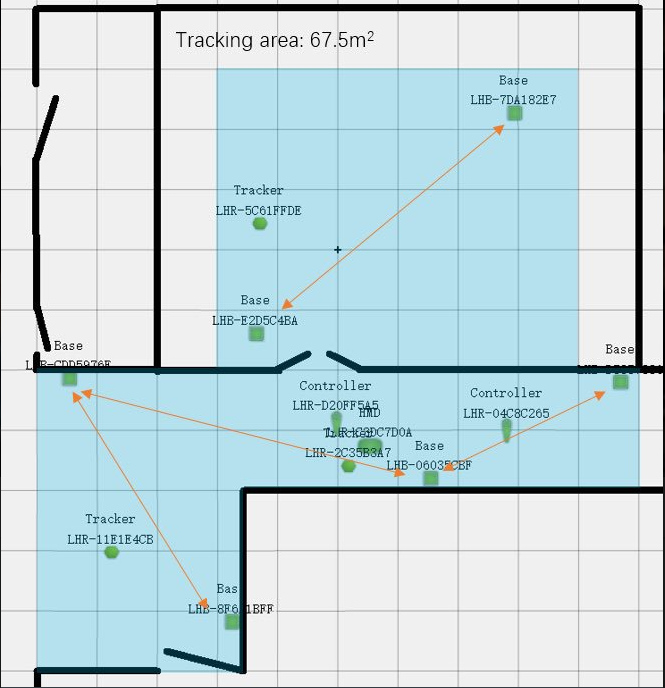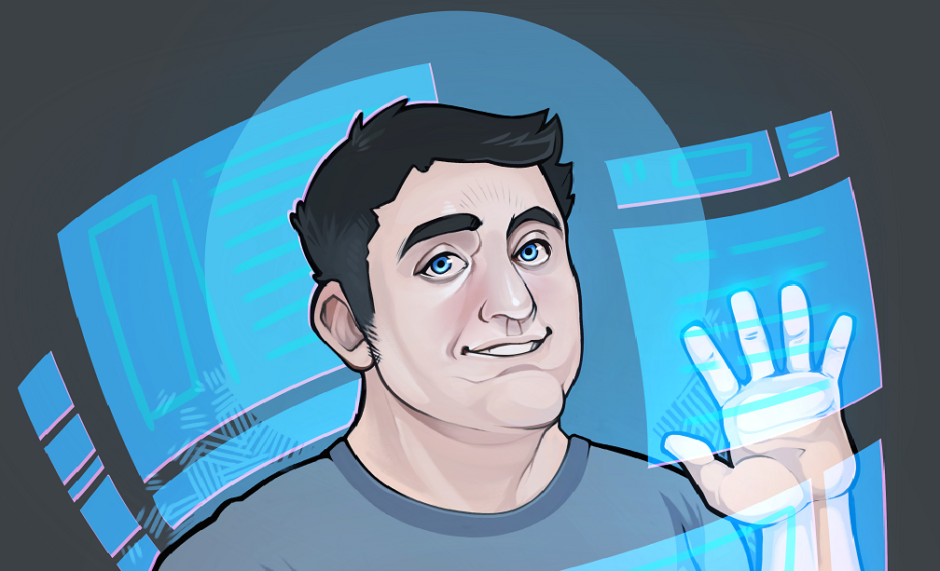If you’ve had the pleasure of setting up Oculus and Vive VR rigs, then you’re aware that the Vive is a dream to set up compared to the Oculus – Oculus is incredibly, annoyingly finicky, while HTC Vive usually just works. (HTC support notwithstanding).
 HTC’s test area (Image grabbed from @AGraylin)
HTC’s test area (Image grabbed from @AGraylin)
The Vive’s outside-in tracking is sub-millimeter and usually rock-steady. It’s something to throw a newb into a Vive HMD, waggle the controllers out in front of them “can you see these”, “yes”, “then grab them” and the newb latches on with an awestruck face. VR becomes real.
The original Lighthouses came with a sync cable, but later versions didn’t need them, and there were hints that the range of Lighthouses was easily extensible beyond the 3m range recommended in the Vive documentation.
I find this intriguing because of the current setup that a lot of the VR location-based entertainment companies use – like The Void, IMxLABs , etc. is really leveraging off of some experience with mocap – they typically use something like a slew of OptiTrack cameras – and this turns out to be a headache in terms of support (many expensive cameras, a lot of calibration, crunching numbers to get positions of everything then disseminating it).
Lighthouses, on the other hand, take care of a lot of this for you, leaving you just to worry about occlusion (something cameras also suffer from).
In fact, Alan Yeats (@vk2zay Valve Lighthouse engineer) suggested (in a bunch of tweets) that the current crop of Lighthouses exposed just one of the “modes” they were designing around and they would soon expose more. OK it’s been about three years but we are now seeing a hint of that.
A recent post from HTC’s Alvin Wang Graylin shows some of the recent experiments the HTC has engaged in – linking up to 16 Lighthouse pairs to create an extended playarea.
In fact the docs claim that you can use a lighthouse pair to cover a 100m sq area. (A. Yeats notes that only 4 pairs are supported out of the box). 100m. That’s a football field in length. For multiple rooms, imagine 16x that coverage – which should be able to deal with any occlusion issues. You could cover an entire museum with trackers for an immersive VR experience.
That plus the fact that you can create a tracked device for as little as $3 in parts is pretty incredible.
The price for location based entertainment just dropped significantly – I look forward to some entrepreneurs to create some really immersive VR experiences and usher in the next era of location-based entertainment.
